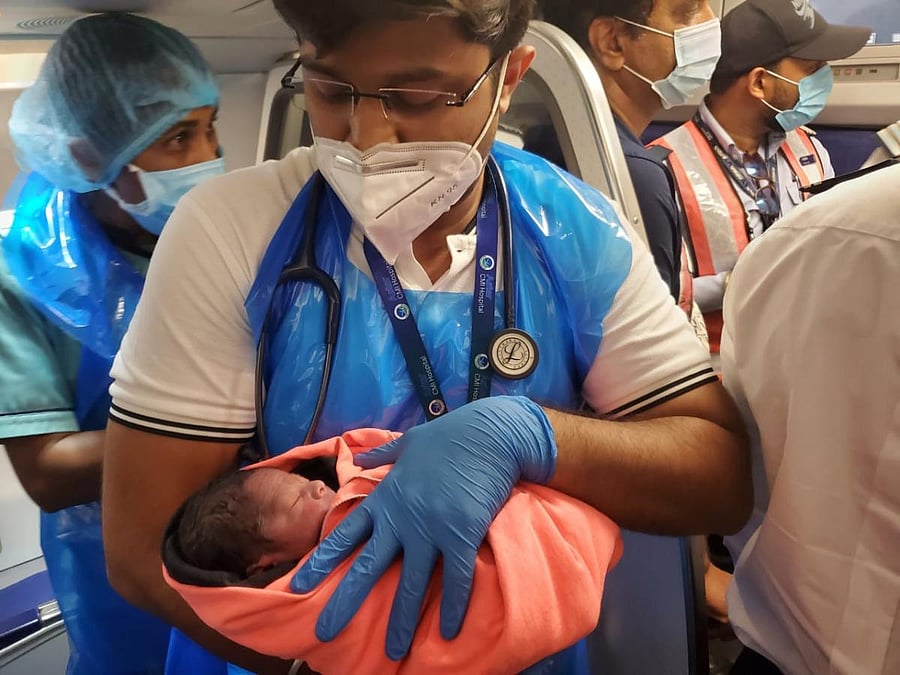
In the past six months, two babies have been born onboard flights. Both were safe deliveries, thanks the presence of doctors onboard. Is the cabin crew equipped to deal with such a situation by themselves?
Janet (name changed), an IndiGo cabin crew member says that if a situation arises they know what they are supposed to do. “During our training we have a module called first aid. In that we are taken through childbirth in a step-by-step process. They have all the necessary equipment present on board and also a manual that would help carry out the delivery effectively,” she says.
A Vistara spokesperson says that inflight birth is a key aspect of the crew training curriculum. “Each of them is required to undergo practical and theoretical examinations before they are endorsed as certified first aiders,” they say.
The crew are also given special training on after-birth care required for the mother and the baby.
Vistara adds that it is the responsibility of the crew to keep the pilot informed so that a decision about diversion or emergency landing can be taken if necessary.
Dr Sangeeta Kujur, chief medical officer, AirAsia India says that apart from mandatory training before they start flying, all cabin crew go through annual training to brush up their skills.
“Training includes informative videos and presentations. Each aircraft has a medical kit equipped with all the requisites including injectables, if there is a doctor present on board to assist with the delivery. The cabin crew do not operate the medical kit as they are trained solely for normal deliveries,” she says.
She adds that the delivery is ideally conducted in the aft galley in privacy, in each aircraft.
“In case the expectant mother goes into labour on board, the crew members are trained to monitor contractions, prepare the mother for delivery, check for the umbilical cord around the neck, deliver the baby, clamp the umbilical cord, deliver the placenta, and take care of the baby and mother post-delivery,” says Dr Sangeeta.
What happens if there are complications?
Airlines have a protocol in place regarding carriage of an expectant mother. Women between 28 and 34 weeks of pregnancy need to provide a ‘fit to fly’ certificate from their treating obstetrician stating that their pregnancy is normal and does not have any complications. This certificate is required at the time of check in without which they are not permitted to fly.
“AirAsia India does not permit women who are pregnant beyond 35 weeks on board,” says Dr Sangeeta. This is to reduce the occurrence of an inflight birth and any complications that arise from such a situation.
“The complications are explained to us as well so you have an idea about what you can do. We may not be as good as a doctor but there is a certain instinct that kicks in, especially with how much in-depth training we’re given,” says Janet.
The Vistara spokesperson says that while cabin crew are trained to handle critical medical situations like stoppage of pulse and breathing, internal and external bleeding and more, in the case of complications during childbirth, an emergency landing at the nearest airport is ideal and advised.
If anything happens mid air, is the airline liable?
“In addition to the ‘fit to fly’ certificate that is requested for, a liability statement is taken from the expectant guest from 27 weeks till 34 weeks, explaining the chances of delivery and the likely complications,” explains Dr Sangeeta.
